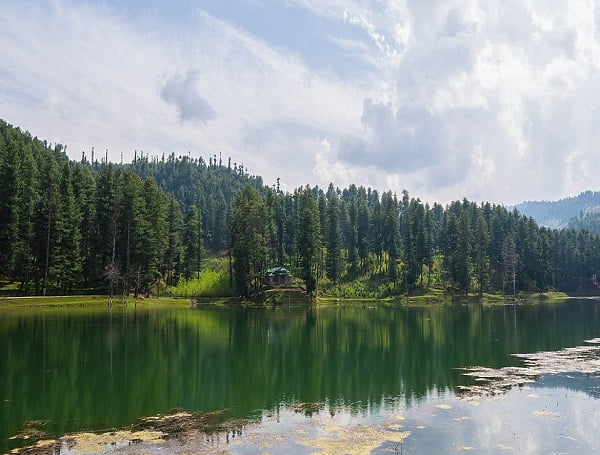

Kashmir and Ladakh, two of the most enchanting regions in northern India, offer a diverse range of experiences, from lush valleys and serene lakes to stark deserts and snow-capped mountains. This travel guide will help you navigate the highlights and plan your journey through these stunning landscapes.

Getting There:
By Air: The easiest way to reach Kashmir and Ladakh is by air. Srinagar Airport (SXR) serves as the main gateway to Kashmir, with regular flights from major Indian cities like Delhi, Mumbai, and Bangalore. For Ladakh, Leh Airport (IXL) is the primary entry point, with flights connecting from Delhi, Mumbai, and other major cities.
By Road: For the adventurous, road trips to Ladakh and Kashmir are popular. You can drive from Delhi to Leh via the Manali-Leh Highway or from Srinagar to Leh via the Srinagar-Leh Highway. Both routes offer breathtaking scenery but are subject to weather conditions and road closures.
By Train: The nearest major railway station is in Jammu, from where you can take a taxi or bus to Srinagar. There are no direct trains to Leh, so this option is typically combined with road travel.
Where to Stay:

Srinagar: For a unique experience, stay in a houseboat on Dal Lake, where you can enjoy the serene waters and traditional Kashmiri hospitality. Alternatively, choose from a range of hotels and guesthouses in Srinagar, including options in the old city and modern areas.
Gulmarg: Luxury resorts and comfortable hotels are available in Gulmarg, providing easy access to skiing and other activities. For a more rustic experience, consider staying in a traditional wooden lodge.
Pahalgam: Accommodations in Pahalgam range from upscale hotels to cozy guesthouses. Consider staying near the river for scenic views and easy access to hiking trails.
Leh: In Leh, you’ll find a variety of lodges, hotels, and guesthouses catering to different budgets. Options range from basic guesthouses to luxury hotels with stunning views of the surrounding mountains.
Nubra Valley: The Nubra Valley offers unique accommodations such as desert camps and boutique hotels. Staying in a tented camp provides a close-to-nature experience amidst the sand dunes and mountains.
What to Do:
Srinagar: Explore the Mughal Gardens, including Shalimar Bagh, Nishat Bagh, and Chashme Shahi. Enjoy a shikara ride on Dal Lake, visit the historic Jama Masjid and Shankaracharya Temple, and stroll through the vibrant markets of Lal Chowk.
Gulmarg: Known for its lush meadows and ski slopes, Gulmarg offers year-round activities. In winter, indulge in skiing and snowboarding, while summer is perfect for golfing, hiking, and taking the Gondola ride to Apharwat Peak for panoramic views.
Pahalgam: Enjoy the scenic beauty of Pahalgam by exploring Betaab Valley, Aru Valley, and Baisaran. Activities include hiking, fishing, and horse riding. Pahalgam is also the starting point for the Amarnath Yatra pilgrimage.
Sonamarg: Known as the "Meadow of Gold," Sonamarg is a gateway to trekking routes and the Thajiwas Glacier. Enjoy picturesque landscapes, the Sind River, and opportunities for nature walks and picnics.
Leh: Explore the historic Leh Palace and monasteries like Thiksey, Hemis, and Diskit. Visit the picturesque Pangong Lake and Tso Moriri Lake, and take a trip to the magnetic hill and the highest motorable pass, Khardung La.
Nubra Valley: Experience the unique landscapes of Nubra Valley with a camel safari in the sand dunes of Hunder. Visit the Diskit Monastery and enjoy the hot springs at Panamik. Explore the charming villages and interact with the local communities.
Travel Tips:
Acclimatization: Both Kashmir and Ladakh are at high altitudes, so allow time to acclimatize to prevent altitude sickness. Stay hydrated, avoid strenuous activities in the initial days, and consult a doctor if needed.
Weather: The best time to visit Kashmir is from March to August for pleasant weather and blooming flowers. For Ladakh, June to September is ideal, with clear roads and moderate temperatures. Winters are harsh and may limit travel options.
Permits: Certain areas in Ladakh require special permits, especially near the India-Pakistan border. Ensure you obtain the necessary permits in advance.
Clothing: Pack warm clothing for Ladakh, even in summer, as temperatures can drop significantly. In Kashmir, light to moderate clothing is sufficient, with warmer layers for cooler evenings.
Health & Safety: Carry basic medicines and a first aid kit. Be mindful of local customs and respect cultural practices. Always check the local political situation before traveling.
This travel guide provides a comprehensive overview to help you plan your journey through Kashmir and Ladakh, ensuring an unforgettable adventure in these beautiful and diverse regions.
Best Kashmirani Tour Package Planner
Kashmirani Tour Package Planner